#region: rugova
Photo
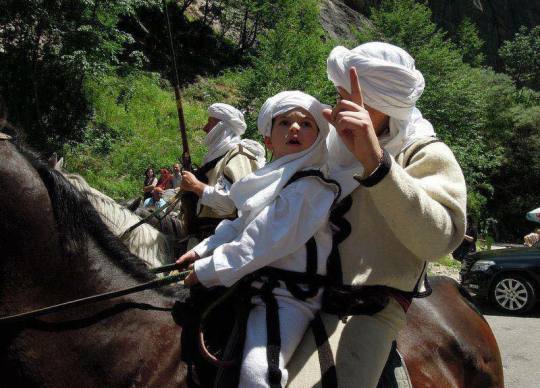
Albanians in Rugova in traditional costumes.
117 notes
·
View notes
Text
Kosovo, per la prima volta una leader è intervenuta nella sessione plenaria del Parlamento Europeo

Kosovo, per la prima volta una leader è intervenuta nella sessione plenaria del Parlamento Europeo
Un lungo discorso appassionato, che ha toccato molti punti di contatto tra l’Unione Europea e il Paese balcanico che più sostiene l’adesione all’Ue, nonostante le recenti tensioni che mettono Pristina di fronte al rischio concreto di sanzioni internazionali. La presidente del Kosovo, Vjosa Osmani, è intervenuta alla sessione plenaria del Parlamento Europeo, la prima leader nella storia del giovane Stato europeo a rivolgersi agli eurodeputati nell’emiciclo a Strasburgo. “Oggi il Kosovo è libero, è indipendente, è un faro di democrazia", ha aperto il suo discorso Osmani, prendendo parola dopo l’incoraggiamento da parte della presidente dell’Eurocamera, Roberta Metsola: “Conosco i suoi sforzi per la de-escalation e la stabilità nella regione”.
Un intervento iniziato con il ricordo del Premio Sakharov 1998 consegnato dal Parlamento Ue al primo presidente del Kosovo, Ibrahim Rugova (prima che il Paese dichiarasse l’indipendenza nel 2008): “Voglio ringraziarvi dell’incommensurabile e continuo contributo che questa istituzione ha dato alla nostra libertà, democrazia e indipendenza”, ha affermato Osmani, chiedendo agli eurodeputati di “rimanere saldamente al fianco” del Paese più favorevole all’Ue, con “oltre il 90 per cento della nostra popolazione esprime il desiderio intransigente di entrare a far parte di queste istituzioni. Esattamente sei mesi fa Pristina ha fatto richiesta di diventare Paese candidato e il nostro avanzamento verso l’adesione fungerebbe da catalizzatore per la pace e la riconciliazione in una regione in cui le forze maligne hanno storicamente e continuano a seminare divisioni”.
Così come dimostrato dall’ingresso di Slovenia e Croazia nell’Ue, o da Albania, Macedonia del Nord e Montenegro nella Nato, “l’integrazione della nostra regione non è solo di primaria importanza, ma ha anche un significato strategico".
Per la presidente Osmani, “è tempo di decisioni coraggiose, non di passi a metà, il Kosovo e i Paesi democratici dei Balcani Occidentali meritano di meglio”. D’altra parte “non ci allontaneremo mai dal nostro percorso euro-atlantico”, è la promessa della leader kosovara.
A proposito di integrazione europea, la numero uno del Kosovo si è voluta soffermare sul fatto che il Parlamento Europeo “ha lottato insieme a noi per la causa della liberalizzazione dei visti, fino al voto decisivo dello scorso 18 aprile: “Ha dato ai giovani brillanti e ambiziosi del mio Paese la possibilità di prosperare proprio come i loro coetanei in tutta l’Unione”. Come ricordato dalla presidente dell’Eurocamera Metsola, “è stato un percorso irto di ostacoli, ma insieme possiamo essere orgogliosi che dal primo gennaio 2024 ci sarà questa libertà di movimento”. E poi, proprio come i Ventisette, il Kosovo è particolarmente vicino all’Ucraina nella sua lotta di resistenza contro l’esercito russo: “Il 24 febbraio 2022 è stato un giorno buio per l’Europa e per noi è stato un ricordo rivissuto, a cui speravamo di non assistere mai più”, ha puntualizzato la presidente Osmani. Ecco perché “siamo stati il primo Paese della nostra regione a imporre sanzioni alla Russia” e sono state portate avanti diverse iniziative a sostegno di Kiev: “Dall’addestramento degli ucraini allo sminamento, dal lavoro per sostenere i sopravvissuti alle violenze sessuali, fino a un programma dedicato per sostenere i giornalisti ucraini per continuare a raccontare la verità”.
Per quanto riguarda le tensione nel Nord del KosovoPeter Stano, portavoce dell'Alto rappresentante Ue, Josep Borrell, afferma "Nonostante i nostri ripetuti appelli, il primo ministro del Kosovo, Albin Kurti, ha finora fallito nell'intraprendere passi decisivi per ridurre le tensioni" nel Nord del Kosovo.
"Il piano in cinque punti illustrato nella lettera all'Alto rappresentante Ue, Josep Borrell, non affronta in maniera adeguata alcuni degli elementi fondamentali che hanno provocato l'ultima crisi.
Mentre il lavoro diplomatico continua, l'Ue ha preparato delle proposte di misure con effetto immediato", precisando che tali misure non rappresentano però sanzioni contro il Kosovo....
#notizie #news #breakingnews #cronaca #politica #eventi #sport #moda
Read the full article
0 notes
Text
U okolini Peći dječaka ubio kamion
U okolini Peći dječaka ubio kamion
Foto: Reporteri
U Peći je juče od zadobijenih povreda nakon nesreće u kojoj ga je udario kamion, preminuo mladić star oko 16 godina, potvrdio je portparol policije za region Peći Fadilj Gaši, prenosi Kosovo online.
“Oko 17.50 časova policija je obaviještena da je u selu Rugova u Peći došlo do nesreće sa smrtnim ishodom. Incident se dogodio kada je kamion mikser za beton vozeći unazad udario…

View On WordPress
0 notes
Text
A series of historical texts describing the massacres, situation and invasion of Albania and the regions outside of Albania up till 1910s to 1940s.
Leo Trotsky: Behind the Curtains of the Balkan Wars (1912) - As a young journalist, Russian revolutionary Leo Trotsky experienced at first hand the Serbian invasion of Kosovo and Macedonia in October 1912 and described it in all its horror in a report back to a Ukrainian newspaper.
The New York Times: A Trail of Blood (1912) A report that appeared in ‘The New York Times’ on 31 December 1912 on the Serbian invasion of Kosovo.
Frankfurter Zeitung: The Balkan War (1913) A front-page newspaper editorial in Germany denounces Serbia's extermination policies of the Kosovo Albanians during the First Balkan War in 1913.
Egon Erwin Kisch: The Shelling of Shkodra and the Burning Down of the Bazaar (1913) A German journalist visits Shkodra just after the Montenegrin assault of April 1913.
Leo Freundlich: Albania's Golgotha ... (1913) The full text of Austrian publicist Leo Freundlich’s moving book on the Serbian invasion of Kosovo in late 1912.
Dole in Dibra: Official Report ... (1913) This report, published in December 1913, detailed the carnage caused by the Serbian invasion of the Dibra and Luma region along the present Albanian-Macedonian border.
Consul von Heimroth: Report on the Situation in Skopje and Kosova ... (1913) - Correspondence from the Austro-Hungarian consul in Skopje on the chilling situation there and in Kosova (Kosovo) following the Serbian invasion.
Archbishop Lazër Mjeda: Report on the Serb Invasion of Kosova and Macedonia (1913) - Mjeda was the Catholic archbishop of Skopje from 1901-1921. He reports to the Vatican here on the carnage caused by the Serbian invasion of Kosova (Kosovo) and Macedonia in the autumn of 1912.
Austro-Hungarian Vice-Consul Kohlruss: The Situation in Prizren - An Austro-Hungarian official reports on the situation in Prizren one year after the Serbian conquest of Kosovo.
Carnegie Endowment for International Peace: Report on the Serbian Invasion of Kosovo during the First Balkan War - Short report of the Carnegie Endowment for International Peace concerning the Serbian invasion of Kosovo during the First Balkan War, 1912.
British Foreign Office report: Vlora in the Summer of 1914 - Letter from Edith Durham on the chaotic situation in Vlora on the eve of the Greek invasion.
Christo Dako: Terrible Greek Atrocities in the District of Kortcha - Albanian journalist Christo Anastas Dako informs Aubrey Herbert in London about the atrocities committed by Greek troops in southern Albania in early 1914.
Mid’hat bey Frashëri: The Epirus Question - the Martyrdom of a People -Political figure Mid’hat bey Frashëri denounces the destruction of much of southern Albania by Greek military and paramilitary forces in 1913-1914.
Statistics of the Rugova Massacre - Statistics of a massacre in the Rugova Highlands in Kosovo in February 1919.
Rexhep Mitrovica & Bedri Pejani: A Kosovar Protest - A letter to the Great Powers from two Kosovar intellectuals to appeal for assistance against the Serbian annexation of Kosovo.
Gjon Bisaku, Shtjefën Kurti & Luigj Gashi: Albanian Minority in Yugoslavia Three Catholic priests in Kosovo present a memorandum to the League of Nations on the desperate plight of their people under Serbian rule.
Convention Regulating the Emigration of the Turkish Population ... - An international treaty between the governments of Yugoslavia and Turkey for formalise the start of the expulsion of the Albanians and Turks from Kosovo, Macedonia and southern Serbia.
Edith Durham: Albania - An overview of Albanian history and a plea for justice following the Italian invasion of Albania.
The Resolution of Bujan - The 1944 resolution of the Conference of Bujan, that promised the right to self-determination and even secession for Kosovo, was a document of great significance to the Kosovo Albanian population, but was subsequently ignored and forgotten.
Eyewitness Account of the Expulsion of the Chams from Greece - An account of the massacre in Filat (Filiates) and the expulsion of the Albanian Chams from Greece in September 1944.
British Report on the First Cham Congress of Vlora - A British military document reporting on the First Cham Congress held in Vlora (Valona) on 23 September 1945.
Committee of Cham Albanians on Greek persecution of the Chams - A protest by the Cham Anti-Fascist Committee following the expulsion of the Albanian Cham community from Greece.
Rexhep Qosja: The Albanian Question and its Solution - Kosovar intellectual figure Rexhep Qosja provides an overview of the Albanian question in Yugoslavia, written during the last decade of Serb rule in Kosovo.
87 notes
·
View notes
Photo

1969. A beautiful illustration of the Rugova dance, Peja region, Kosovo. This illustration was made by the Croatian photographer/ethnographer and illustrator Zdenka Sertic.
Reference: Žunić-Baš, L. (1969). Zehn Reisen durch die Jugoslawische Folklore; Illustrationen Zdenka Sertic. [Schriftleitung: Julijana vuco: Izdavacki zavod Jugoslavija.
#kosovo#ethnography#folklore#folklor#jugoslavija#kosova#albania#rugova#dance#clothes#traditional#music#ex yugoslavia#dancing#illustration#zdenka sertic#shqiperia#drummer#sword
79 notes
·
View notes
Photo







166) Shkreli to historyczne albańskie plemię i region w regionie Malësia Madhe w północnej Albanii i są w większości katolikami. Wraz z ekspansją Imperium Osmańskiego część plemienia wyemigrowała do Rugova w zachodnim Kosowie od około 1700 roku, po czym kontynuowała migrację do regionów Dolnego Pešteru i Sandżaku (dziś w Serbii i Czarnogórze). Plemię Shkreli, które wyemigrowało do Kosowa, przeszło na islam w XVIII wieku i zachowało język albański jako język ojczysty; Shkreli w Pešter i Sandžak (znani jako Škrijelj / serbski: Шкријељ) z czasem zostali zislamizowani i stali się słowiańskimi w XX wieku, więc dziś sami identyfikują się jako część pochodzenia bośniackiego, chociaż na płaskowyżu Pešter częściowo wykorzystali albański język aż do połowy XX wieku. Shkreli w Albanii i Czarnogórze są przeważnie katolikami. Patronem plemienia Shkreli jest św. Mikołaj (Shen Kole).
0 notes
Text
Non dimentichiamo il Kosovo dove oggi si sopravvive con 300 euro al mese
(di Massimiliano D'Elia) La situazione in Kosovo è apparentemente molto tranquilla anche se è forte il risentimento dei kosovari albanesi nei confronti di quelli serbi e viceversa. Gli albanesi, specialmente le giovani generazioni, nutrono e covano di giorno in giorno, un risentimento difficile da controllare e addomesticare. Quello che i serbi hanno fatto ai loro genitori, ai loro parenti più anziani pesa come un macigno irremovibile poiché i segni e le ferite di quella terribile guerra, quel terribile massacro, sono ancora riscontrabili dalle testimonianze dei loro cari e visibili dalle lapidi presenti nei cimiteri improvvisati a cielo aperto, nei giardini delle loro case. Ma anche i serbi hanno subito, da parte dei miliziani albanesi delll'Uck e non solo, inenarrabili violenze che ancora fanno male e sono difficili da dimenticare.
Il Kosovo oggi, però, vuole rialzarsi, cercando di lasciare indietro il passato, desideroso di delineare una propria identità, nonostante le innumerevoli contraddizioni dovute alle diverse etnie che compongono la sua popolazione. Un nuovo Governo si è insediato agli inizi di febbraio con a capo Albin Kurti che può contare del sostegno di una coalizione politica eterogenea composta anche da liste politiche sostenute dai serbi del Kosovo. Una scommessa quella di Albin Kurti, una sfida, quale unica possibilità per placare i sentimenti di vendetta esistenti, con un nuovo inizio virtuoso per tutti i kosovari.
L'economia, in costante crescita, sta cercando di porre basi solide per garantire, ai governi che si succederanno, la possibilità di poter pianificare uno sviluppo strutturale e sostenibile nel tempo. Occorre favorire politiche di sviluppo, in sintonia e con l'ombrello dell'Unione Europea, combattendo senza sosta la corruzione che è dilagante a tutti i livelli. E' di ieri la notizia dell'arresto di un numero imprecisato di poliziotti dediti alle "mazzette".
Le parole del presidente Kurti, durante il suo insediamento, rendono meglio l'idea di una zona dell'Europa ad alto rischio di infiammabilità.
Kurti se da un lato ha annunciato la necessità di dover intraprendere colloqui con Belgrado dall'altro ha ribadito la necessità di interessare la Comunità Internazionale per istituire dei Tribunali Penali Internazionali ad hoc per giudicare e condannare tutti coloro che si sono macchiati di crimini contro la popolazione civile, durante la guerra. Kurti ha anche parlato dell'istituzione di un esercito regolare kosovaro. Di fronte alle rimostranze degli alleati di governo delle liste serbe per via dell'annuncio dell'esercito kosovaro e dei tribunali ad hoc, Kurti ha dovuto mediare annunciando che è sua intenzione favorire la reciprocità tra gli scambi commerciali tra Pristina e Belgrado. Il vulnus sono i prodotti serbi venduti in Kosovo che per ovvii motivi subiscono una tassazione altissima. Laddove si riuscisse davvero a raggiungere un equanime accordo di reciprocità commerciale ne potrebbero giovare tutti con un interscambio pari a circa 400 milioni di euro.
L'Unione Europea è molto attiva in questo ambito e per invogliare il processo di pacificazione e di relazione, ha firmato accordi commerciali con la Serbia per 118 milioni di euro, ponendo come condizione l'avvio di nuovi colloqui tra Pristina e Belgrado. La Serbia, tuttavia, tra le tante promesse annunciate e le flebili aperture non disdegna di mandare messaggi "subliminali" a mezzo stampa. Il ministro della Difesa Serbo, Aleksandar Vulin, ha dichiarato ieri che la Serbia, anche nel corso del 2020, continuerà il processo di ammodernamento delle sue Forze Armate, specialmente per quanto riguarda l'aeronautica. Ha terminato il suo messaggio dicendo: "siamo già pronti per le sfide future".
Nel Kosovo nonostante le belle parole dei politici si registra, ancora nella vita comune, un continuo processo di emarginazione di tutti i serbi kosovari: sono tenuti al margine della società e discriminati. Di fronte al persistere di queste antipatiche situazioni sociali occorre lavorare per garantire una prosperità universale, favorendo uno sviluppo economico strutturale e sostenibile dell'intera area, cercando di alzare gli stipendi ai propri cittadini senza distinzione di razza ed etnia (un professore di scuole superiori in Kosovo, oggi nel 2020, guadagna poco più di 300 euro al mese).
Per fortuna la NATO nel lontano 1999 si è insediata stabilmente in Kosovo dove, con diverse missioni e circa 30 paesi impegnati, compresi i partner non facenti parte dell'Alleanza, ha riportato il Paese ad una progressiva pacificazione favorendo il ripristino dei servizi essenziali garantendo continuo sostegno alle autorità delle varie municipalità. Oggi la sicurezza è assicurata dalla polizia kosovara, addestrata negli anni dalla NATO, e dalle unità della missione Eulex. KFOR interviene solo nei casi di emergenza come terza possibilità.
Molto attivi nei vari processi di riavvicinamento del Kosovo alla Serbia, all'Ue e alla NATO sono Germania, Italia, Francia e Usa. Sorniona e guardinga è la Russia di Putin, molto attiva con i musulmani kosovari la Turchia di Erdogan, entrambi, però, non vogliono sentir parlare di Tribunali Penali Internazionali ad hoc e di un esercito regolare del Kosovo.
Una speranza però viene data anche dal Comando KFOR RC-W a Pec, guidato dal colonnello dell'Esercito italiano, Natale Gatti che solo pochi giorni fa ha consegnato come donazione Cimic (cooperazione civile militare) al liceo ‘Haxhi Zeka’ di Rugova, 18 nuovi computer : “Sono contento di essere qui con voi. Vedendo voi vedo il futuro di questo Paese. Quello di oggi e’ un piccolo contributo per questa comunita’, ma il resto dovete farlo voi. I giovani sono una priorita’ per Kfor“.
Così ha replicato sindaco Rugova, che nello stesso liceo è stato studente e poi insegnante: "Grazie Comandante. Siamo riconoscenti per quello che state facendo per noi. L’investimento nella gioventu’ e’ il futuro“.
KFOR in Kosovo
L'Operazione KFOR è iniziata all'alba del 12 giugno 1999. Il contingente italiano entrava in Kosovo alla mezzanotte dello stesso giorno e raggiungeva la città di Pec il mattino del 14 giugno. In precedenza le truppe NATO erano schierate nella FYROM (dicembre 1998) per assicurare, nell'ambito dell'operazione "Joint (Determined) Guarantor" (sotto comando dell'Allied Rapid Reaction Corps), l'evacuazione in emergenza degli osservatori OSCE dal Kosovo e successivamente il supporto alle organizzazioni umanitarie per l'assistenza ai profughi usciti dal Kosovo. Dal settembre 1999 e fino alla costituzione del NATO Headquarters Tirana (giugno 2002) alla KFOR risaliva anche la responsabilità dell'operazione NATO in Albania denominata Communication Zone West (COMMZ-W) a guida italiana. Alla fine del 2004, in occasione del termine dell'operazione "Joint Forge" in Bosnia & Erzegovina, con il passaggio delle responsabilità delle operazioni militari dalle forze NATO (SFOR) a quelle della Unione Europea (EUFOR), le autorità NATO decisero di raggruppare tutte le operazioni condotte nell'area balcanica in un unico contesto operativo (definito dalla Joint Operation Area), dando origine il 5 aprile 2005 all'operazione "Joint Enterprise" che comprendeva le attività di KFOR, l'interazione NATO-UE, e i NATO HQ's di Skopje, Tirana e Sarajevo. Dal maggio 2006 è stata avviata la ristrutturazione delle forze che ha visto la trasformazione delle forze militari internazionali in Kosovo da 4 Multinational Brigades a 5 Multinational Task Forces. Dal 10 gennaio 2010, pur rimanendo inalterati missione e compiti, il livello ordinativo delle Multinational Task Forces è stato ridotto a Multinational Battle Groups (MNBGs) su base Reggimento. In relazione agli sviluppi di situazione connessi con la dichiarazione di indipendenza del Kosovo, proclamata unilateralmente il 17 febbraio 2008, e la successiva entrata in vigore della relativa Costituzione il 15 giugno 2008, la presenza delle forze NATO è stata incrementata. Dal 1 marzo 2011 ad agosto 2019 KFOR schierava in Kosovo due Multinational Battle Group (di cui uno a comando italiano), un Reggimento Carabinieri MSU (composto esclusivamente da militari dell'Arma dei Carabinieri), un Reggimento con funzioni di Riserva Tattica (multinazionale), tre unità multinazionali Joint Regional Detachment (JRDs) di cui uno a leadership italiana. Il 15 agosto 2019, con la ristrutturazione della catena di Comando e Controllo, i Multinational Battle Group si sono trasformati in Regional Command (RC). Inoltre i comandi multinazionali JRDs sono stati soppressi e le unità da loro dipendenti (Liaison and Monitor Team – LMT) sono transitati sotto il comando dei Regional Command. All'operazione "Joint Enterprise" in Kosovo partecipano attualmente 30 Paesi, con un impegno complessivo di forze che oggi ammonta a circa 4000 unità. Dallo scorso 6 settembre 2013 il nostro Paese ha assunto il comando dell'intera missione KFOR e l'attuale Comandante è il Generale di Divisione dell'Esercito Michele Risi, alle cui dipendenze operano 30 nazioni delle quali 22 appartenenti alla NATO ed 8 partner.
Read the full article
0 notes
Text
the bloody history of Kosovo’s football team
When Kosovo defender Mergim Vojvoda stuck out a hopeful boot to poke home his team’s deciding goal in their 2-1 win against the Czech Republic on Saturday, 13,000 supporters in Pristina rose to their feet in joy, but not surprise.
Three months ago, Kosovo had never won a tournament qualifier. Now, off the back of a 15-game unbeaten run and back-to-back victories they stand in pole position to claim one of Group A’s Euro 2020 qualifying spots and seal a place at next summer’s finals.
The team were only accepted as Uefa members in 2016. This is just their second attempt to reach a major tournament, but already they have put their dire World Cup campaign from two years ago – where they lost nine of their 10 games – behind them. Win or lose against England on Tuesday, the hard part is already done.
This is no fairytale. Kosovo, an ex-Yugoslav republic in the southern Balkans, declared independence from Serbia in 2008, though the Serbian capital Belgrade still claims sovereignty. Before that, a brutal civil war between 1998-99 brought the country to its knees, with more than 13,000 people killed and thousands more displaced as an ethnic Albanian resistance fought against the oppressive Serb-led regime.
A truly international team
Kosovo players pose at the start of a training session in Obilic in March 2014, one day ahead of their first international friendly match against Haiti (AFP/Getty Images)
Since emerging from the bloodshed, the country’s football team is mostly drawn from the diaspora. Saturday’s match-winner Vojvoda was raised in Belgium after his family fled from the conflict, whilst the team’s star, the Swansea City forward Bersant Celina, grew up in Norway. In fact the majority of Swiss coach Bernard Challandes’ squad were once refugees. None of them play domestic football in Kosovo.
Internationalism is the key to this team – ironically, after so many years spent outside of Uefa in the football wilderness. The winning goal in June’s 3-2 win over Bulgaria was scored by another adopted Norwegian, Elba Rashani. The present could have looked even brighter – Premier League stars Xherdan Shaqiri and Granit Xhaka, both from Kosovo, declared for Switzerland before the team were accepted into Uefa.
Kosovan football is nothing if not a product of the country’s violent past. Back in 1991, when the Albanian majority suffered under a punitive regime desperate to suppress Albanian nationalism, the Kosovan league was outlawed by the regional authorities. Matches were frequently broken up by Serb militia and the players arrested or beaten, and clubs were thrown out of stadiums owned by the Serb municipal authorities.
“The whole trick was not getting caught,” says Kushtrim Munishi, a former striker for the republic’s top club FC Pristina who played in the first season of the rebel league. “As soon as they had you, you were done.”
‘People would disappear overnight’
Organised football was suppressed in Kosovo during the 1990s (Getty Images)
Football survived in the mud and marshes. Players were chased and attacked by Serb police and armed volunteers, and those supporters who weren’t able to get away suffered ritual humiliation at the hands of the militia.
“This was a time when people were being dragged out of their homes, people would disappear overnight sometimes,” says Edmond Rugova, another former Pristina striker. “You would hear the most horrendous stories – so and so was beaten up or he is nowhere to be found.
“I saw one teammate dragged away during a game still wearing his Pristina kit. We waited three hours until he was released from the police station. His face was beaten and bruised.”
“The league officials were beaten up and arrested too,” says Munishi. “But both sides kept pushing. They’d play the game again and the police would come again.”
Football played a role in the toughening of the Serb attitude to Kosovo’s Albanians. In 1981, FC Pristina appointed as manager a Serb named Bela Palfi. As well as being a tactical master, he recognised how to manipulate the city’s complex ethnic situation to the team’s advantage.
“Palfi realised very quickly that this wasn’t going to work unless the club had a make-up where local kids, Kosovar-Albanian kids, made up the bulk of the starting line-up,” says Rugova.
Here to stay
Kosovo are on a 15-game unbeaten run before their match against England (Getty Images)
With the country gripped by street protests and terrorist violence, Palfi created a team in the image of the city’s people – tough, resourceful and overwhelmingly Albanian.
“We were being pushed around as a people and everything had begun to deteriorate,” says Rugova. “There was a huge political connotation to what we as a football club were doing.” When Pristina won 3-1 at the fortress home of Serb giants Red Star in 1983, Belgrade’s determination to crush Kosovo hardened, culminating in the brutal oppression of the nineties.
Today, the country’s unresolved status still causes problems. In June, Montenegro sacked their Serbian manager Ljubisa Tumbakovic a day after he refused to lead the team out against Kosovo in a Euro 2020 qualifier in Podgorica, the Montenegrin capital. It was a protest against Kosovo’s Uefa membership.
Two players, both Serb-born, also refused to play. Filip Stojkovic and Mirko Ivanic play club football for Red Star Belgrade, and the Montenegro football federation said they had “come under pressure from certain circles” to withdraw.
The problem has divided Europe. On Saturday, eight Czech football fans were arrested in Pristina for planning to fly a drone over the Fadil Vokrri Stadium carrying a banner reading ‘Kosovo is Serbia’ during the game against the Czechs. And in 2016, the team were made to play a World Cup qualifier against Ukraine on neutral territory in Poland, after Ukraine refused to recognise the players’ travel documents.
But Kosovo have shown they are here to stay. Whatever happens against England, they have already written the brightest chapter in their story.
Source link . More news
via wordpress https://ift.tt/2PZqcOE
0 notes
Photo

Albanian traditional clothing (details)
51 notes
·
View notes
Text
It Seems Like Nothing Changes
Paul Cussen
February 1919

Berehaven naval base is disestablished in February 1919.
Coinciding with a further outbreak of the flu and of ‘septic pneumonia’ Dublin Corporation make influenza and pneumonia ‘notifiable diseases’ that have to be reported to the authorities.

Richmal Crompton's anarchic English schoolboy William Brown is introduced in the first published Just William story, "Rice-Mould", in Home magazine.
1 February - James Down and Michael Cotter are badly assaulted by four men in Patrick Street. Cotter tells the subsequent inquest that he had pointed out the assailants (ex-soldiers) to three policemen. The police, according to Cotter, let the assailants go and told him ‘to go home and wash his face.’
Estonian forces liberate Valga and Võru, expelling the Red Army from the entire territory of Estonia.
2 February - James Down is admitted to The North Fever Hospital ‘suffering from tetanus or lockjaw.’

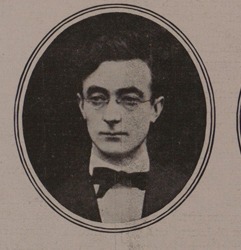
3 February - Éamon de Valera, the leader of Sinn Féin, John Milroy and John McGarry escape from Lincoln Prison in England in a break arranged by Sinn Féin members including Michael Collins and Harry Boland.

Colour Sergeant David McKay dies of a self-inflicted bullet wound at Rocky Island (near Haulbowline, current site of the Island Crematorium). He was the sole survivor of one of the vessels at the Battle of Jutland and had earned several military decorations including the Croix de Guerre (b. 1879)
Soviet troops occupy Ukraine.
4 February - Pressburg (Bratislava) becomes the capital of Slovakia.
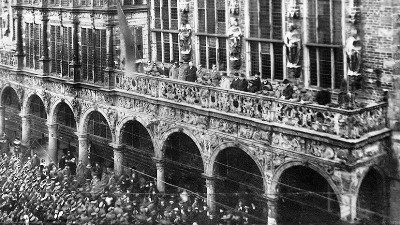
The City of Bremen's Soviet Republic is overthrown by the Freikorps after 25 days existence and at the cost of 80 lives (the Republic’s leaders are executed)
5 February - United Artists (UA) is incorporated by D.W. Griffith, Charlie Chaplin, Mary Pickford and Douglas Fairbanks.
Eight workers from the maintenance department of a Canadian financed hydroelectric plant in Barcelona colloquially known as 'La Canadiense' are laid off causing 140 workers to walk out.
Soviet troops occupy the city of Kiev.
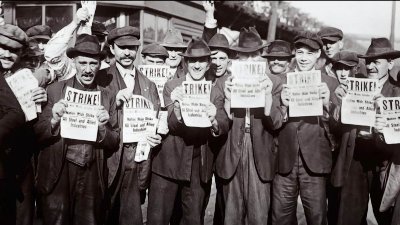
6 February - The Seattle General Strike begins in the United States, affecting over 65,000 workers.

7 February - Sergeant William Roberts dies of influenza in hospital in Cobh.
8 February - The vast majority of plant employees of the Canadian financed hydroelectric plant in Barcelona join the strikers.
11 February - James Down of Belmont, Gardiner’s Hill dies in the North Fever Hospital. His death is caused by exhaustion and heart failure due to tetanus poisoning.
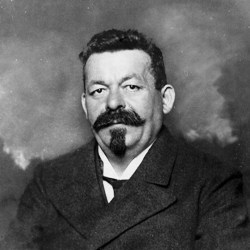
Friedrich Ebert is elected the first President of Germany (Reichspräsident) by the Weimar National Assembly.
The Seattle General Strike ends as the State of Washington's Attorney General summons Federal troops.
The so-called sympathetic Seattle strike was an attempted revolution. That there was no violence does not alter the fact... The intent, openly and covertly announced, was for the overthrow of the industrial system; here first, then everywhere... True, there were no flashing guns, no bombs, no killings. Revolution, I repeat, doesn't need violence. The general strike, as practised in Seattle, is of itself the weapon of revolution, all the more dangerous because quiet. To succeed, it must suspend everything; stop the entire life stream of a community... That is to say, it puts the government out of operation. And that is all there is to revolt–no matter how achieved.
- Seattle’s Mayor Ole Hanson
12 February - Petty Officer John Sparling of the Coastguard, dies of illness in Ballycotton (b.1871, St Barnabas, Mauritius)
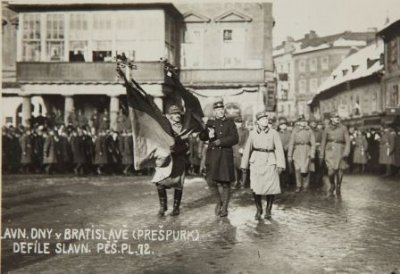
Ethnic Germans and Hungarian inhabitants of Pressburg start a protest against its incorporation into Czechoslovakia and the Czechoslovak Legions open fire on the unarmed demonstrators.
13 February The deceased gentleman was one of the Assistant County Surveyors under the Cork County Council, and also an earnest and prominent member of the Cork County Board, G.A.A., of which he was chairman for a number of years, and it can therefore be readily understood that he was well and widely known. The late Mr Down had an extremely brilliant collegiate course, winning many distinctions at his examinations, and had Providence spared him, he would undoubtedly have advanced to the front rank of his profession [as an engineer]. The fact has got to be added that, upright and genial, he lived in the esteem and respect of these and the other circles in which he moved. . . .
- Cork Examiner
Driver Harry Martin dies of pneumonia in the Military Hospital Fermoy.
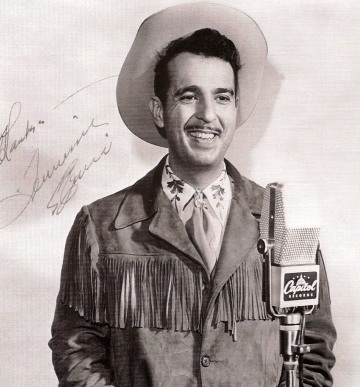
Tennessee Ernie Ford is born in Bristol, Tennessee (d. 1991)
The Kingdom of Portugal otherwise called The Monarchy of the North, based in Porto, comes to an end after less than a month as it fails to gain strong support.

14 February - Corporal William Southgate dies of influenza (b. 1890, Ipswich)

Private Denis Murphy dies of influenza.

Private Arthur Bullock dies of influenza at the Military Hospital in Buttevant.
The Polish–Soviet War begins with the Battle of Bereza Kartuska when at 7 in the morning, 57 Polish soldiers and 5 officers, led by Capt. Mienicki, make a sortie into the township of Bereza capturing 80 soldiers of the Red Army.
15 February - At least 1,500 Jews (mostly women, children and elderly) are murdered by the Ukranian military in the town of Proskurov.
16 February - 432 Albanians are murdered in the Rugova region by the forces of the Kingdom of Serbs, Croats and Slovenes.

16-21 - February Uniformed peasants in Kuivastu on Saaremaa island rebel to "overthrow the power of the landowners" and against the government of Estonia.
17 February - The Cork Examiner reports that the influenza “has again made its appearance in Cork…to an extent that is somewhat disconcerting”. New cases of entire families being affected are recorded and deaths occur “in not a few instances”. The Cork Fever Hospital reports a large number of serious cases and at the Cork District Hospital “upwards of 42 patients affected with the disease have been treated during the week”.
50 new cases of influenza are recorded in Kilmallock Hospital, most of which come from the Charleville district. Three deaths in the same family occur this week in Ballingaddy and two young men from Charleville die in hospital. Medical Officer Dr Thomas Kennedy reports that several influenza cases are admitted to the Youghal Workhouse Hospital.

CSM Joseph Wood dies of influenza (b. 1867, Salford)
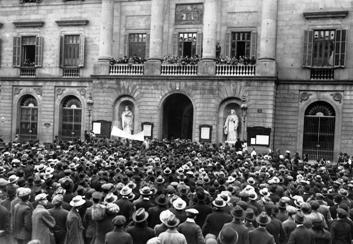
80% of workers in the textile industry walk out, striking in support of the laid off workers at La Canadiense. Following this, the railway and tram workers also declare themselves on strike. Through the solidarity of the Barcelona working class, all demands of the strikers are met by the authorities, including the introduction of an 8-hour working day as well as wage increases in some industries.

18 February Sergeant Edwin Weall dies of influenza in Queenstown (b.1888, Preston, Lancs.)
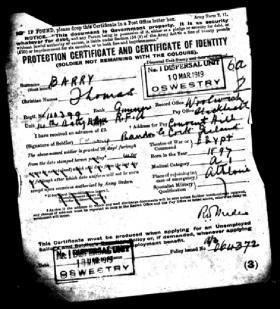
20 February - Gunner Tom Barry sets sail for home from Egypt.

Private William Kennedy dies of TB.

Private Jeremiah O’Shea dies of typhus at Cork Fever Hospital.

Georges Clémenceau is injured by an attempted assassin, Émile Cottin. The Prime Minister supposedly says:
We have just won the most terrible war in history, yet here is a Frenchman who misses his target 6 out of 7 times at point-blank range. Of course this fellow must be punished for the careless use of a dangerous weapon and for poor marksmanship. I suggest that he be locked up for eight years, with intensive training in a shooting gallery.
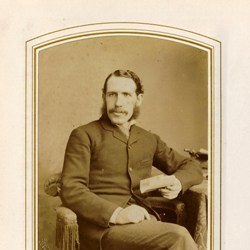
21 February - John O’Connor Power dies in London.
Lieutenant Jaan Klaar leads government forces to crush the Saaremaa rebellion in the battle of Upa near Kuressaare. Altogether 185 people are killed in the uprising, 22 of them at the hands of the rebels; 81 rebels are killed in the fighting and an additional 82 are later executed.

22 February AB Percy Martin dies of influenza at Haulbowline (b. 1896, Gloucestershire)
Seaman Henry Newman dies of illness (b. 1873)

Private John Isaacs dies of influenza and pneumonia in Fermoy.

23 February Private Henry Wright dies of influenza (b. 1897)
Lance Corporal George Parker dies of TB in Central Hospital (b. 1893, Sheffield)

24 February - Shoeing Smith Patrick Hennessy dies of TB.
25 February - Oregon places a one cent per US gallon (0.26¢/litre) tax on gasoline, becoming the first U.S. state to levy a gasoline tax.
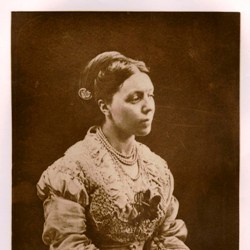
26 February - Anne Thackeray Ritchie dies in London (b. 1837). She is the eldest daughter of William Makepeace Thackeray, step-aunt of Virginia Woolf and is believed to have inspired the character of Mrs Hilbery in Woolf's Night and Day. A successful novelist, her 1885 novel Mrs. Dymond contains the earliest English-language use of the proverb "Give a man a fish and you feed him for a day; teach a man to fish and you feed him for life."
An act of the United States Congress establishes most of the Grand Canyon as a United States National Park.
28 February - Professional football player and manager John James Carey is born in Dublin (d. 1995)

Stoker 1st Class John Corcoran dies of nephritis.
Stoker Patrick Healy dies of influenza.
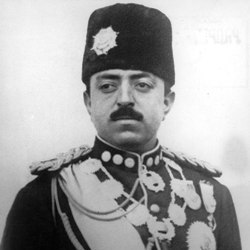
Amānullāh Khān becomes King of Afghanistan.
0 notes
Text
Kosovo votes to establish national army | News | DW
The Kosovo parliament on Thursday voted in support of establishing a 5,000-strong national army, despite the parliament’s Serb minority representatives declaring the move illegal.
The draft laws received support from 98 deputies in the 120-seat parliament, but the vote was boycotted by the legislature’s 11 Serb deputies and criticized by officials in Serbia.
Three laws, promoted by theKosovo government and passed in a first reading, upgraded the mandate of the lightly-armed domestic Kosovo Security Force (KSF) to be transformed into an army, which the government said bypassed the need to make changes to the constitution.
Read more: Serbia and Kosovo: One agreement, two interpretations
Approval in a second reading in a few days’ time is required for the legislation to be completed.
The landlocked Balkan territory of 1.8 million people, which declared independence in 2008, is still guarded by NATO troops.
NATO moved into the state in June 1999 following weeks of air strikes by the alliance to end the killing and expulsion of ethnic Albanian civilians by Serbian forces fighting a two-year counter-insurgency after the break-up of Yugoslavia.
1999: NATO intervention against Serbia
Traces of war
In the late 1990s, the conflict in Kosovo was escalating as tens of thousands of people fled the region. After all efforts at pacifying the region failed, NATO began carrying out air raids on military bases and strategic targets in Serbia on March 24, 1999. Eleven weeks later, Serbian President Slobodan Milosevic finally gave in.
1999: NATO intervention against Serbia
Peaceful resistance fails
In the mid 1980s, protests began in Kosovo against government attempts to curtail the rights of the Albanian majority. The reprisals worsened in the 1990s. Ibrahim Rugova, leader of the political movement in Kosovo since 1989, tried to make Milosevic change course using peaceful resistance – without success.
1999: NATO intervention against Serbia
Armed guerilla warfare
An armed resistance formed in Kosovo. The self-appointed liberation army UCK started a brutal guerrilla war and carried out violent attacks against Serbs and Albanians whom they saw as collaborators. Serbia reacted with retaliatory measures: Houses were torched and shops plundered, as hundreds of thousands fled the region.
1999: NATO intervention against Serbia
Systematic expulsion
As time passed, the war became ever more brutal. Serbian forces increasingly attacked civilians with the aim of breaking the UCK’s resistance and its support among the population. Many people looked for refuge in the forests. Trains and trucks transport thousands of people to the borders – without passports or other documents which could prove that their home had been in Kosovo.
1999: NATO intervention against Serbia
Last attempt at negotiation
Under the auspices of the US, France, the UK, Russia and Germany, the conflicting parties attended a conference in Rambouillet, France in February 1999 with the aim of working out a limited settlement guaranteeing Kosovo’s autonomy. Representatives of Kosovo accepted the conditions of the deal, but their Serbian counterparts were not willing to make any concessions. The negotiations failed.
1999: NATO intervention against Serbia
‘Humanitarian intervention’
On March 24, 1999, NATO began bombarding military and strategic targets in Serbia and Kosovo in order to stop the violence against Albanians. Germany joined the military action, known as Operation Allied Force. It was NATO’s first war in its 50-year history – and that without the official backing of the UN Security Council. Russia sharply condemned the intervention.
1999: NATO intervention against Serbia
Infrastructure destroyed
Next to military installations, NATO also attacked transportation networks such as railroad tracks and bridges. During the following 79 days and nights, the alliance carried out more than 37,000 operations with 20,000 rockets and bombs striking Serbian territory and killing countless civilians – what NATO referred to as “collateral damage.”
1999: NATO intervention against Serbia
Poison clouds over Pancevo
Industrial sites were also among the targets. NATO bombs hit chemical plants and a fertilizer factory in the town of Pancevo near the capital, Belgrade. Huge amounts of toxic substances made their way into rivers, soil and the air, with grave health consequences for the local population. Serbia accused NATO of having used depleted uranium ammunition, as well as cluster and fragmentation bombs.
1999: NATO intervention against Serbia
War against war propaganda
In order to deprive Slobodan Milosevic of his most important propaganda tool, NATO decided to attack Serbia’s public television station in Belgrade. The Serbian government, although told of the attack in advance, withheld the information from the public. Sixteen people lost their lives in the bombing.
1999: NATO intervention against Serbia
Off target
In Kosovo, NATO bombs inadvertently hit a group of Albanian refugees, killing an estimated 80 people. More “collateral damage” occurred when NATO bombed the Chinese embassy in Belgrade, killing four people. The incident led to a severe diplomatic crisis between Beijing and Washington.
1999: NATO intervention against Serbia
Horrific outcome
In early June, communications out of Belgrade showed that Milosevic was finally willing to make concessions. NATO brought an end to its raids on June 19. During the air strikes, thousands of people were killed, 860,000 refugees were displaced and Serbia’s economy and infrastructure were largely destroyed. Kosovo was placed under the administration of the United Nations.
Author: Sonila Sand / ad
‘Unforeseeable consequences’
Marko Djuric, Belgrade’s chief government negotiator in EU-mediated talks with Kosovo, warned of “unforeseeable consequences” for regional security if the army was formed and urged international reaction.
“Serbia will protect its interests on the whole of its territory,” Djuric said.
Serbian Defense Minister Aleksandar Vulin said in a statement that the only armed forces in Kosovo must be NATO-led peacekeepers and that a Kosovo army would “threaten Serbia and the Serbs.”
Read more: ‘2025 is ambitious for Western Balkans to join EU’
The US-led NATO alliance, which has 4,000 troops in the Balkan country, has also in the past urged Kosovo not to create a national army unless it had the support of the Serb minority.
It is not the first time the nationalist-dominated government has tried to create a national army. Last year the government’s attempt was stymied by the refusal of Serb politicians to agree to change the constitution.
The United States and most of the EU member states recognize Kosovo, but objections from UN Security Council members Russia and China, which back Serbia in not accepting Kosovo’s independence, have prevented it from becoming a member of the United Nations.
Kosov and Serbia also have to normalize their relations if they are ever to become members of the European Union.
law/jm (AP, Reuters)
Each evening at 1830 UTC, DW’s editors send out a selection of the day’s hard news and quality feature journalism. You can sign up to receive it directly here.
document.addEventListener("DOMContentLoaded", function (event) { if (DWDE.dsgvo.isStoringCookiesOkay()) { facebookTracking(); } }); function facebookTracking() { !function (f, b, e, v, n, t, s) { if (f.fbq) return; n = f.fbq = function () { n.callMethod ? n.callMethod.apply(n, arguments) : n.queue.push(arguments) }; if (!f._fbq) f._fbq = n; n.push = n; n.loaded = !0; n.version = '2.0'; n.queue = []; t = b.createElement(e); t.async = !0; t.src = v; s = b.getElementsByTagName(e)[0]; s.parentNode.insertBefore(t, s) }(window, document, 'script', 'https://connect.facebook.net/en_US/fbevents.js'); fbq('init', '157204581336210'); fbq('track', 'ViewContent'); }
Source link
The post Kosovo votes to establish national army | News | DW appeared first on Today News Stories.
from WordPress https://ift.tt/2q18Xwm
via IFTTT
0 notes
Text
‘Father of the Nation’ of Different Countries
‘Father of the Nation’ of Different Countries
The title of father of the nation is typically given to those who played an influential role in setting up the systems of governance, (i.e., political system form of government, and constitution), of the country. They can also be military leaders of a war of independence that led to the existence of the country. The following people are still called the “Father” of their respective nations.
S.NO
Founder/Father
Country
1
Afghanistan
Ahmad Shah Durrani
2
Albania
Skanderbeg
3
Argentina
DonJosé de San Martín
4
Bahamas
SirLyndenPindling
5
Bangladesh
Sheikh Mujibur Rahman
6
Belize
George Cadle Price
7
Bolivia
SimónBolívar
8
Brazil
Dom Pedro I
9
Brunei
Omar Ali Saifuddien III
10
Burma
Aung San
11
Cambodia
NorodomSihanouk
12
Canada
Sir John A. Macdonald
13
Chile
Bernardo O’Higgins
14
China
Sun Yat-sen
15
Colombia
SimónBolívar
16
Costa Rica
José María Castro Madriz
17
Croatia
Ante Starčević
18
Cuba
Carlos Manuel de Céspedes
19
Czech Republic
FrantišekPalacký
20
Dominican Republic
JuanPabloDuarte
21
Ecuador
SimonBolivar
22
Ghana
KwameNkrumah
23
Guyana
CheddiJagan
24
Haiti
Jean-Jacques Dessalines
25
India
Mohandas Karamchand Gandhi
26
Iran
Cyrus the Great
27
Israel
DavidBen-Gurion
28
Italy
Vittorio Emanuele II di Savoia
29
Kenya
Jomo Kenyatta
30
Kosovo
Ibrahim Rugova
31
Lithuania
Jonas Basanavičius
32
Macedonia
KrsteMisirkov
33
Malaysia
Tunku Abdul Rahman
34
Malta
Giorgio Borg Olivier
35
Mauritius
Sir Seewoosagur Ramgoolam
36
Mexico
Miguel Hidalgo y Costilla
37
Myanmar
Aung San
38
Namibia
Sam Nujoma
39
Nepal
King Tribhuwan
40
Netherlands
William the Silent
41
Nigeria
Nnamdi Azikiwe
42
Norway
Einar Gerhardsen
43
Panama
SimónBolivar
44
Papua New Guinea
Sir Michael Somare
45
Peru
DonJosede San Martin
46
Portugal
D. AfonsoHenriques
47
Republic of China
Sun Yat-sen
48
Republic of Korea
KimGu
49
Russia
Peter I of Russia
50
Sahrawi Arab Democratic Republic
El-Ouali Mustapha Sayed
51
Saint Lucia
Sir John Compton
52
Saudi Arabia
Ibn Saud of Saudi Arabia
53
Scotland
DonaldDewar
54
Singapore
Lee Kuan Yew
55
Slovenia
PrimožTrubar
56
Somalia
Mohammed Abdullah Hassan
57
South Africa
Nelson Mandela
58
Spain
Fernando el Catholic Monarchs
59
Sri Lanka
Don Stephen Senanayake
60
Suriname
Johan Ferrier
61
Sweden
Gustav I of Sweden
62
Tanzania
Julius Nyerere
63
Turkey
Mustafa Kemal Atatürk
64
United Arab Emirates
Sheikh Zayed bin Sultan Al Nahyan
65
United States
George Washington
66
Uruguay
José Gervasio Artigas
67
Venezuela
Simón Bolívar
68
Vietnam
Ho Chi Minh
v List of Folk Dance Form in India – State Wise For Bank Exam
v Famous Palaces in India
v LIST OF SPACE RESEARCH CENTERS IN INDIA
v Famous Temples in India
v Major Tiger Reserves of India
v Union Territories with their capitals and governing bodies
v Important Indian Towns and Cities situated on River Bank
v List of Longest, Largest, Highest, Tallest Places in the India
v List of Waterfalls in India
v List of First in India
v List of Indian Government Schemes
v India’s Rank on different index 2018
v List of Insurance Joint Ventures in India
v Important Missiles of India
v List of Indian Ambassadors to Foreign Countries
v Thermal Power Stations & Hydro Stations In India
v Major Religions of the World
v Memorial Places of Famous Indian Leaders
v 50 Major Airlines of the World
v Cities and Their Nicknames
v Nick names of Famous Persons & Sportsperson
v Indian Political Parties & their Leaders & Symbols
v State Symbols of India
v Countries visited by Narendra Modi (2014-2017)
v National Parks of India
v Important Museums In India
v Recently Appointed Brand Ambassadors
v All Chief Justices of India Since 1950 Till Date
v Important International Boundary Lines
v Famous Cricket Stadium In World
v Major Lakes in India
v ‘Father of the Nation’ of Different Countries
v Indian Cities and Their Nicknames
v Highest, Longest, Biggest, Largest, Deepest, Smallest of the World & India
v 50 Famous Sports Personalities in India
v List of 29 Indian States and Their Capitals + Chief Ministers in 2018
v National Symbols of India
v Indian Railway Zones Headquarters & Divisions
v List of Bharat Ratna Award Winners 1954 – 2017
v Difference Between Private And Nationalised Banks?
v Khel Ratna, Arjuna & Dronacharya award winners for 2017
v Jnanpith Award Winners 2017
v Man Booker Prize Winners Complete List (1969-2017)
v Agriculture GK Objective Question & Answers MCQ
v Socio – Religious Reform Movements In India
v Best Famous Slogans/Quotes By Indian Freedom Fighters
v Important Wars & Battles in Indian History
v Important Years/Dates in Indian History 1851 to 2010
v Regional Rural Banks ( Sponsors & States )
v List Of National & International Airports In India
v 14 Major Seaports in India, Indian Sea ports
v Joint Military Exercises Of Indian Army With Other Countries 2018
v Bank, Headquarters, Tagline/Slogan & Their Chairman/Head 2018
v CEOs, MDs & Heads of Indian Banks 2018
v Foreign Banks in India And Their Headquarter 2018
v Heads of Important Offices in India :Latest
v Important Indian Organisations And Their Headquarters 2018
v List of 35 UNESCO World Heritage Sites in India
Read the full article
0 notes
Video
undefined
tumblr
Albanians in Novi Pazar | 1904
The following film footage, dating from 1904, is probably the first ever to show Albanians. It is part of a longer documentary film made by the British political figure Arnold Muir Wilson (1857-1909) from Sheffield in Yorkshire, and the early British cinema director Frank Mottershaw (1850-1932), also from Sheffield. Wilson, a member of the Sheffield City Council and of the Conservative Party, also served as honorary consul for Serbia in Sheffield and promoted trade ties between the two countries. In 1904 he travelled to Belgrade and worked with Mottershaw to film the coronation of King Peter I Karadjordjević of Serbia on 21 September of that year. The resulting 35 mm silent film – 54:19 minutes and 1,480 metres in length – was first shown in London in December 1904 and in Serbia in April 1905, with English and Serbian subtitles. It was restored in Bologna in 1999-2004 and is presently preserved in the Yugoslav Film Archives (Kinoteka) in Belgrade. It is said to be the oldest film shot in Serbia and contingent territories. The “Albanian” portion of the film, beginning at 42:10 and being no more than 1:16 minutes in length, shows Albanians and other people standing about and walking through the courtyard of an inn and in an adjacent market street in the Muslim town of Novi Pazar, now in southern Serbia. In 1904 Novi Pazar (Alb. Pazari i ri or Tregu i ri; Turkish Yeni Pazar) was the capital of the Ottoman Sanjak of Novi Pazar and indeed, from 1881 to 1912, the region was part of the Vilayet of Kosovo. This may explain the presence in the film of so many Albanian figures, recognisable by their white felt caps and distinctive clothing, in a region which today is inhabited by a large majority of Bosniaks, with only a very few Albanians. Thanks go, in connection with this presentation, to Bardh Rugova, Associate Professor of Albanian at the University of Prishtina, for his research on the background to the film.
81 notes
·
View notes
Text
Mutter-Teresa-Kirche im Kosovo geweiht
Vor zwanzig Jahren starb sie. Vor einem Jahr und einem Tag wurde sie heilig gesprochen. Und an diesem 5. September ist ihr Fest: Mutter Teresa. An diesem Dienstag wird ihr feierlich eine Kirche geweiht – nicht in Kalkutta, wo sie als „Engel der Armen“ bekannt wurde. Sondern, ja doch, im Kosovo. Dahinter steckt eine verwickelte Geschichte.
Mutter Teresa war keine Inderin, sondern Albanerin. Skopje in Mazedonien, wo sie 1910 geboren wurde, gehörte damals zum Osmanischen Reich. Ihre Eltern stammten aus dem Kosovo; in Letnica im Kosovo empfing die spätere Friedensnobelpreisträgerin und Ordensgründerin ihre erste heilige Kommunion. Da passt es also, wenn die neue Mutter-Teresa-Kirche in Prishtina, der Hauptstadt des Kosovo, steht – die albanische Hauptstadt Tirana hat immerhin schon den Mutter-Teresa-Flughafen.
Die neue Kirche steht an der Stelle, wo zu Beginn des zweiten Jahrhunderts Florus und Laurus, die ersten Märtyrer der Region, ihr Leben gelassen haben sollen. Das Grundstück für die Kirche ist ein Geschenk der Stadt und des ersten kosovarischen Präsidenten, Ibrahim Rugova. 2005, also zehn Jahre bevor eine Mehrheit der EU-Staaten die Unabhängigkeit des Kosovo anerkannte, wurde der Grundstein gelegt; die jetzige Weihe des Gebäudes findet im Beisein von Kardinal Ernest Simoni statt. Dieser einfache albanische Priester ist ein Überlebender der blutigen Christenverfolgung zur Zeit des kommunistischen Regimes; Papst Franziskus hat ihn vor kurzem überraschend zum Kardinal erhoben und jetzt als seinen Vertreter zu den Feiern in Prishtina geschickt.
Die (numerisch sehr kleine) katholische Minderheit im Kosovo gehört zur albanischen Bevölkerungsgruppe des jungen Staates; ihr steht der mehrheitlich orthodoxe, serbische Bevölkerungsteil gegenüber. Das Mit-, Neben-, manchmal Gegeneinander zu den Orthodoxen, vor allem aber zu den Muslimen hat die Katholiken im Kosovo geprägt. In osmanischer Zeit gab es hier einst die „laramana“: Dieser albanische Begriff meint heimliche Christen, die nur zum Schein muslimisch geworden waren. Sie trugen sogar zwei Namen, einen muslimischen für die Öffentlichkeit und einen christlichen im Privaten. Noch 1911 hat es im Kosovo solche Krypto-Christen gegeben.
Die albanischen Katholiken – auch die aus dem Kosovo – haben überdurchschnittlich viel zum Erwachen eines albanischen Nationalgefühls im 19. und frühen 20. Jahrhundert beigetragen: Der Pfarrer Ndue Bytici de Marino gilt wegen seiner Dichtungen als „die Nachtigall des Kosovo“. Die Christenverfolgung durch die Kommunisten in Albanien hatte in der zweiten Hälfte des letzten Jahrhunderts viele Weiterungen in den Kosovo hinein. Jetzt steht dort die Mutter-Teresa-Kirche. Und die muslimische Dichterin Mazllum Saneja hat Werke von Johannes Paul II. ins Albanische übersetzt. All das gehört, wie der „Engel von Kalkutta“, zum verwirrenden balkanischen Mosaik.
(rv 05.09.2017 sk)
from Radio Vatikan http://ift.tt/2gGPOhZ
0 notes
Text
Stream the documentary The disputed border between Kosovo and Montenegro | DW Documentary for free now on Documentaries.io
The border between Montenegro and Kosovo is a source of controversy. The Rugova Mountains form part of the border between Kosovo and Montenegro. In the days of the former Yugoslavia, the exact boundaries were never clearly established. Yet residents of this region don’t want the... https://documentaries.io/film/the-disputed-border-between-kosovo-and-montenegro-dw-documentary/
0 notes
Photo

152) Kelmendi to historyczne albańskie plemię (fis) i region w Malësia (gmina Kelmend) i wschodniej Czarnogórze (część gminy Gusinje). Znajduje się w górnej dolinie rzeki Cem i jej dopływów w paśmie Gór Przeklętych w Alpach Dynarskich. W tej samej wiosce, która jest najbardziej wysuniętą na północ wioską Albanii, wypływa rzeka Vermosh. Vermosh wlewa się do jeziora Plav. Kelmendi są wymieniani już w XIV wieku, a jako plemię terytorialne rozwinęło się w XV wieku. Na Bałkanach jest szeroko znana historycznie ze swojego długoletniego oporu wobec Imperium Osmańskiego oraz rozległych bitew i najazdów na Turków, które sięgały na północ aż po Bośnię i na wschód aż po Bułgarię. W XVII wieku ich liczba i siła wzrosła tak bardzo, że czasami używano ich nazwy dla wszystkich plemion północnej Albanii i Czarnogóry. Osmanowie kilkakrotnie próbowali całkowicie wypędzić ich z ojczystego terytorium i siłą osadzić ich w innym miejscu, ale społeczność raz po raz wracała na ziemie swoich przodków. Dziedzictwo Kelmendi można znaleźć w całym regionie. Kelmendi znajduje się poza doliną Cem (Selcë, Vukël, Nikç i inne), Gusinje / Gucia (w szczególności wioski Vuthaj, Doli, Martinaj i Gusinje / Gucia) oraz Plav (Hakaj) na wschodzie w Rožaje i Pešter Płaskowyż. W Kosowie potomkowie Kelmendi żyją głównie w kanionie Rugova i zachodnim Kosowie. W Czarnogórze połowa plemienia (pleme) Starego Ceklin i część osiadłego tam w XVI wieku Kuči pochodzi z Kelmendi. Najbardziej wysunięta na północ osada z Kelmendi znajduje się we wsiach Hrtkovci i Nikinci w Syrmii, gdzie w 1737 roku osiedliło się tam 1600 katolickich albańskich uchodźców.
0 notes